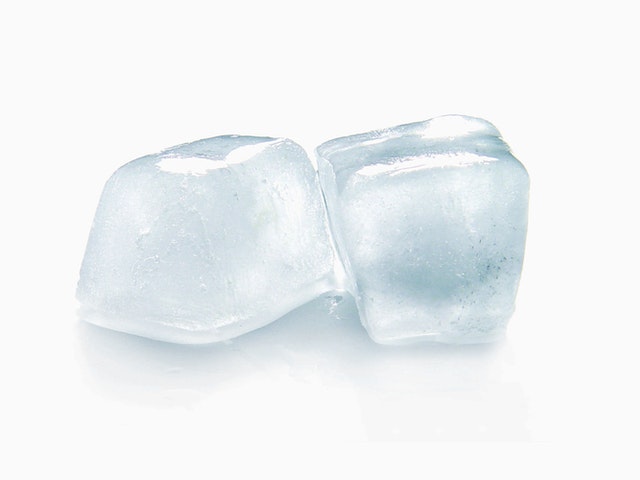This post may contain affiliate links. Please read the disclaimer for more information.
Icing our injuries has long been part of the standard protocol. We’ve been indoctrinated into believing it’s one of the very first things to do and one of the most important things to do to recover from an injury.
This is completely inaccurate. It is not only useless in terms of helping recovery, but it is harmful to the recovery process.
The procedure of icing injuries was brought about by the R.I.C.E. protocol, invented by Dr. Gabe Mirkin. The letters stand for rest, ice, compression, and elevation.
Many of these letters have an issue in impeding the recovery process, but today we’re going to focus on why icing is certainly one to avoid. Particularly because it is usually the first thing people do once they hurt themselves.
For the example injury, I am going to use an ankle sprain because it is very common and relatable.
When you sprain your ankle, you feel instant pain. You may hobble around on it for a couple minutes, but you’re eventually brought to the ground by either the sheer pain, to examine the ankle, or both.
The process of swelling has already begun. It’s probably not visible yet, but it is certainly tender to the touch.
A key thing to understand about swelling is that it’s the body’s natural response to a musculoskeletal injury. It is natural, therefore it is not good or bad.
One of the first problems with icing is that the theory is to “stop the swelling” or at least slow it down.
But why would I want to do that?
Swelling is the first response of the body and I trust that it knows what to do.
“We’re designed to self-repair, not self-destruct,” says athletic trainer, Gary Reinl.
The body has evolved to respond this way for a reason, because it works!
With this ankle sprain, swelling quickly begins. There is congestion forming at the site of the injury and it is accumulating. At first, this is nothing to be concerned with.
Swelling is natural, and it is the formation of congestion at the site. This includes waste from the injury itself and fluid being sent by the body in order to evacuate that waste material.
What the body wants to do is send it’s own fluid to evacuate that waste in order to decongest the area so proper circulation and oxygen supplies can be restored once again. Then, that waste gets discarded through the lymphatic system, the only way waste can be discarded within the body.
When we apply ice during this process, “it traps the waste in and around the damaged site, prevents the natural flow of oxygen supplies, and causes additional damage,” explains Reinl.
Let me reiterate, it is not only a useless practice, but a harmful one at that.
So the waste can’t be evacuated now, bloodflow/oxygen supplies are limited, what is the additional damage?
The additional damage is that icing “delays the healing process, increases swelling, and shuts off the signals that alert you of harmful movement,” says Reinl.
Icing is causing the injured site (the ankle) to essentially hemorrhage into otherwise unaffected areas. The increase in swelling and delay of healing is creating more congestion around the area that is “going to suffocate and kill otherwise perfectly healthy cells that were not involved in the initial trauma,” he continues.
As Gary Reinl encourages,
“Your job is to prevent further loss and regenerate that which has been destroyed.”
The procedure of icing misses the mark on both accounts here. It is causing more loss in the form of extra, unnecessary tissue death and it is delaying and worsening the area that was “destroyed,” the ankle. This is turning a simple injury into a huge mess.
Another issue is that the numbing effect of the ice has shut off the signals that alert you of harmful movement, as previously stated.
What this means is your whole ankle is now numb from the temperature of the ice so you don’t have the feeling to tell which ways your ankle should move or should not move.
For anyone wondering about the issue of pain and what to do about it, the pain is from the congestion; the lack of circulation.
Ice may lessen the pain, but it’s only treating the symptom instead of the cause. In fact, it’s worsening the cause in favor of short-term relief. This is a trade-off you should avoiding making.
You must address the congestion in order to feel better. That is your big problem that needs to be solved.
Earlier, we learned that the congestion forming is a mix of waste from the injury and fluid sent by the body to remove that waste. Obviously, we want to let the body do it’s job so we should be thinking in terms of how to help it along. We want to remove more of that waste and quickly at that.
But we also learned that waste inside the body only gets removed one way; through the lymphatic system. The lymphatic system is nearly fully reliant on muscle activation around the site of injury to move the waste. The body is set up to decongest via muscle activation.
Healing takes place with getting the congestion out, restoring the area around the site of the initial injury, and preventing disuse atrophy. Disuse atrophy simply means not using the area, aka not activating it or moving it.
In simpler terms, the body is seeking active recovery. It wants you to keep moving. Continue using the injured area, as much as you can, because the muscle activation encourages decongestion and regeneration of the tissue.
To learn more, check out Gary Reinl’s groundbreaking book, Iced. He details the story of how icing came to be, the science behind why it’s wrong, and what you can do instead.


Leave a Reply